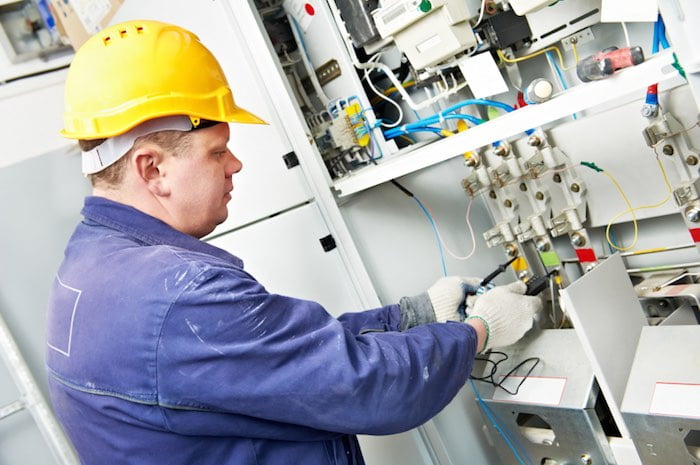5 Options for Controlling Temperature in Sealed Electrical Enclosures

The reasons why enclosure designers choose sealed electrical enclosures in preference to ventilated enclosures are numerous. They may include a desire to keep equipment clean and free from contamination or because the environment surrounding the enclosure is not suitable for ventilated enclosures. Once the decision to use a sealed enclosure is made, it naturally follows that enclosure temperature control is required to ensure the temperature inside the enclosure doesn’t rise above the equipment’s safe working temperature.
Effect of Enclosure Heat Load and Ambient Temperature
Although a sealed electrical enclosure is protected from environmental damage, its temperature is influenced by a combination of the internal heat load, the ambient temperature and the rate that heat generated by the equipment can be dissipated. The temperature inside the enclosure will rise until thermal equilibrium is reached, which is when the rate of heat removal is balanced by the heating effects of the total heat load.
Modern electrical equipment prefers moderate temperatures. Even when manufacturers specify high maximum operating temperatures, it’s safer to choose a lower temperature and in any event, not all items can withstand high temperatures. Sound engineering practice indicates that internal enclosure air temperatures should be below 104 °F and preferably no higher than 95 °F.
Heat Removal or Active Cooling?
The difference between the ambient temperature and the desired internal temperature of the sealed electrical enclosure determines what form of enclosure cooling will work:
- Ambient temperature lower than enclosure temperature: If the ambient temperature range is such that it’s always lower than the chosen enclosure temperature, then it may be possible to use the temperature differential to your advantage by choosing an air to air heat exchanger to extract the heat from the enclosure. The size of the air to air heat exchanger can be easily determined using an Enclosure Temperature Management Calculator.
- Ambient temperature above enclosure temperature: If the ambient temperature is higher than the enclosure design temperature, it’s necessary to use an enclosure air conditioner that can reduce the internal air temperature to below ambient temperature.
Cooling Options
Once the cooling method has been selected, it’s now necessary to decide which of five scenarios is appropriate depending upon the enclosure’s location and environment. These are:
1. Indoor locations
In most indoor locations, where the environment is reasonably clean, a NEMA Type 12 enclosure fitted with a similarly rated enclosure cooler would provide adequate protection. Either an air to air heat exchanger or an enclosure air conditioner can be fitted and the unit would be supplied with a NEMA Type 12 enclosure housing, usually finished in powder coated cold rolled steel.
2. Outdoors:
Units that are installed outdoors require weather protection and also protection against the ingress of moisture and dust. This means that the enclosure should be able to withstand weathering, and cooling units should be protected against the ingress of rain, snow and ice as well as from dust. Normally a NEMA Type 4 powder coated enclosure would be specified for this application, although in coastal locations, a stainless steel unit with NEMA 4X protection may be advisable.
3. Dirty environments:
In extremely dirty environments with high levels of dust and dirt, NEMA 4 protection is required, even for indoor locations. Heavy-duty air filters should be fitted to protect air conditioner inlets.
4. Environments containing corrosive substances:
Should corrosive vapors and liquids be present, it’s necessary to provide corrosion protection to both the enclosure and the cooling unit. The outer housing should be made of stainless steel with a NEMA Type 4X rating. Additional corrosion protection may be required for cooler components such as condenser coils that may be exposed to corrosion. Advice should be obtained as to the most appropriate level of corrosion protection. This level of protection will also protect units that are subject to corrosive water sprays, such as found in the food and beverage industry.
5. Hazardous locations:
Sealed electrical enclosures installed in hazardous areas must be fitted with similarly rated enclosure coolers. Care must be taken to ensure that units are supplied with a hazardous area rating that exceeds the hazards that may be present. It is recommended that specialist advice is obtained.
Other Considerations
Always ensure that enclosure coolers have been approved by a Nationally Recognized Testing Laboratory, such as UL. Also, consider available options such as remote monitoring that will give warning of any cooling problems.
When choosing an enclosure cooler for a difficult environment or location, consult our Support Team, and obtain professional advice on the best option for controlling the temperature of a sealed electrical enclosure.

